Videos—JR: Italy
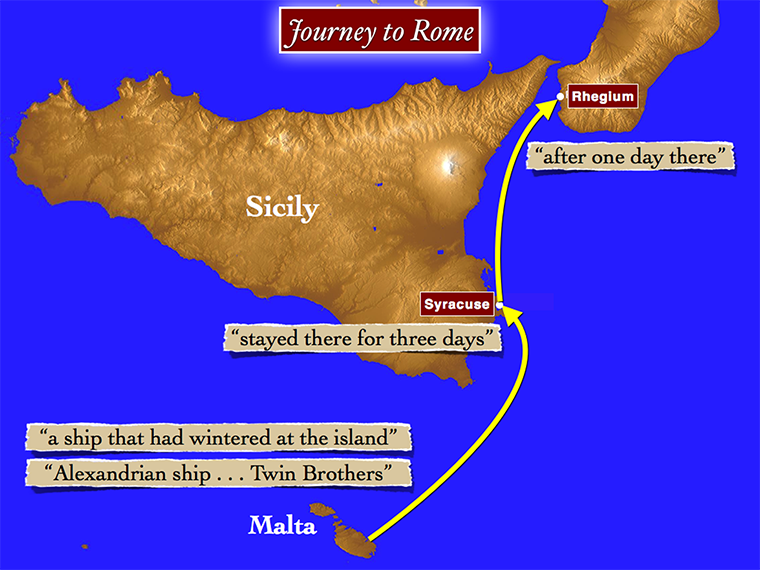
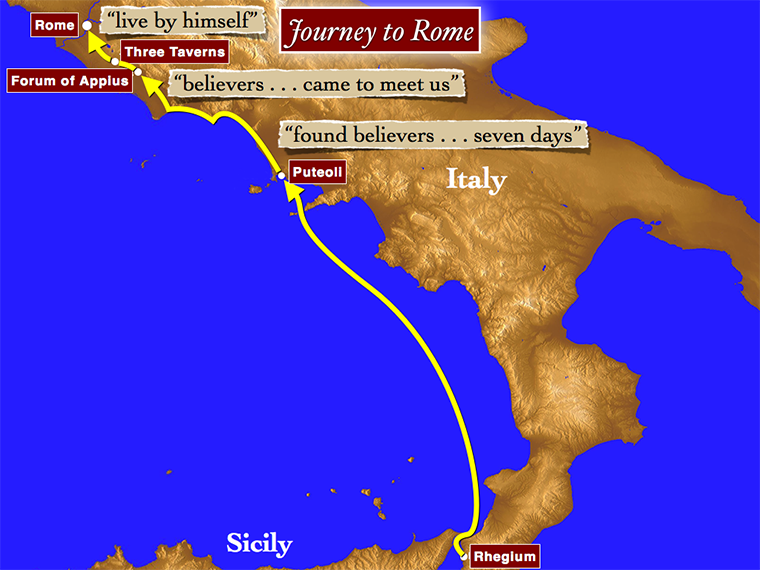
-
JR—Italy: Rhegium (Straits of Messina)
After only three days in Syracuse, the Alexandrian grain ship struck out again up the coast of Sicily toward the straits of Messina, a narrow passageway into the Tyrrhenian Sea between the island of Sicily and the mainland of Italy that was hard to navigate for sailing vessels. Just the right south wind had to arise to promise a good passage. Waiting on the right winds is why most ships working through the straits of Messina would put to port in Rhegium on the toe of Italy to wait for the necessary favorable winds to negotiate the passage past Messina. Our passage was decidedly easier and faster—the speed ferry from Messina to Reggio Calabria (ancient Rhegium).

-
JR—Italy: Puteoli (Naples)
-
Puteoli: Harbor
The harbor at Puteoli was one of the oldest and most prosperous ports of Rome from the days of the old Republic. Here the great grain ships from Alexandria found their final destination, as did the grain ship with the figurehead of Castor and Pollux that Paul and Luke sailed on from Malta. From here, goods and travelers would travel by land up the Via Appia highway to Rome. Puteoli is adjacent to Naples in the Bay of Naples. The opposite side of the bay holds the famous Mount Vesuvius, which exploded catastrophically only twenty years after Paul’s stop at Puteoli.
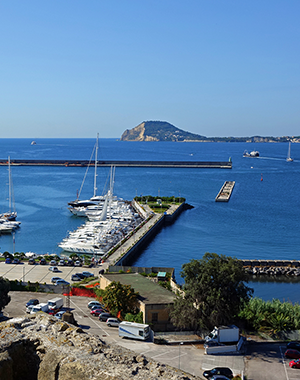
-
Puteoli: Macellum Market
A macellum was a Roman meat market. The macellum at Puteoli is famous for documenting the reality of bradyseism, or “slow earthquakes.” The land is situated in a volcanic caldera that slowly rises and falls over the centuries, leaving the columns underwater and exposed to the bore holes of mollusks. The Roman meat market is a good place to reflect on Paul’s positive reception in Puteoli among believers he never had met, which becomes a major theme for Luke about Paul, Rome, and God’s will.
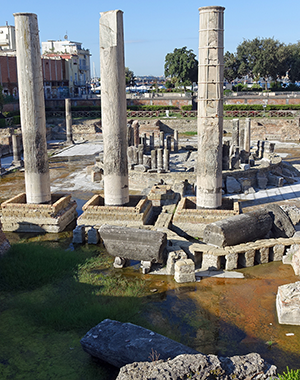
-
Puteoli: Amphitheater
Most visitors to Rome do not know that the Flavian emperors built more amphitheaters than just the famous Colosseum in Rome. In fact, one of the best preserved Flavian amphitheaters in the world is not the Colosseum in Rome but the Flavian amphitheater in Puteoli. Unlike the Colosseum in Rome, the Puteoli amphitheater allows visitors access to the underground levels. These subterranean passageways, holding areas, and storage rooms, along with elevator shafts to the arena floor above vividly portray the inner workings of producing extravagant shows to thrill the masses.
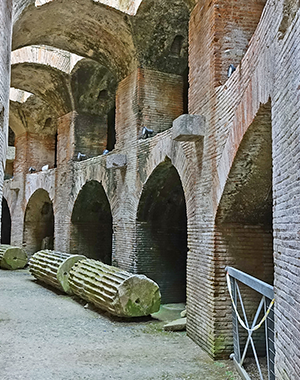
-
Puteoli: Harbor
-
JR—Italy: Via Appia
-
Via Appia: Capua
To catch the Via Appia highway into Rome, one first would have to intersect the highway at its nearest junction to the grain port at Puteoli. This junction was the city of Capua, which sits on the banks of the Laturno River. Thus, Julius and his contingent of prisoners and all the other travelers whose destination was Rome would have to make their way from the port at Puteoli up to Capua.
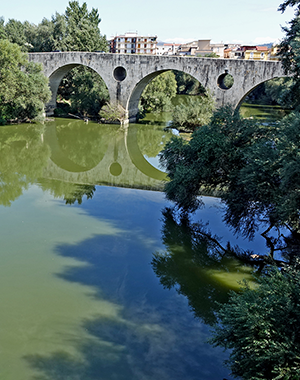
-
Via Appia: Terracina
The rough part of the Via Appia was trying to move across the Pontine Marshes, a swampy area encountered inland just after the coastal city of Terracina. The marshes always bred malaria and the putrid smell of stagnant water pools. Attempts were made to drain the swamps, but never successful, as the sea and sand dunes always reclaimed the land. Road repair was such a constant factor that a canal was dug alongside the Via Appia to allow travel during times of major repair work. Even when the road was open, boating down the canal alongside the Via Appia from Terracina to the Forum of Appius had become the preferred method of transportation in this portion of the journey. The Roman writer Horace gives a lively and colorful description of his experience through this section of the Via Appia.
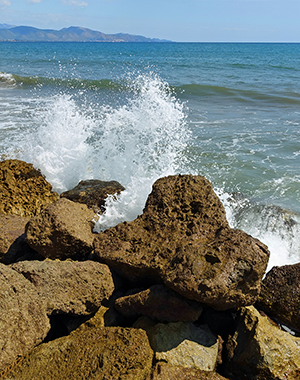
-
Via Appia: Forum of Appius
The Forum of Appius was a junction near the Roman mile marker forty-three, the terminus of the canal boats from Terracina. At the Forum of Appius, Paul was intercepted by a delegation from one of the Roman house churches, who received him warmly. Once again, Luke sees this event as another of the increasing signs of the positive reception of Paul in Italy as a foundation for understanding why Rome always was God’s will for Paul ever since Ephesus.
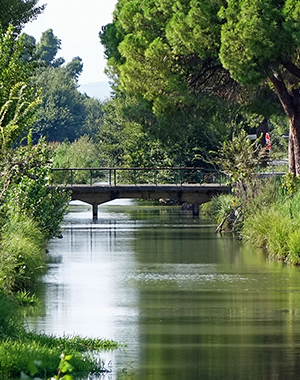
-
Via Appia: Tor Tre Ponti
The Via Appia was traveled heavily, militarily crucial, and regularly needed repairs. About forty years after Paul passed down this road on his way to Rome, the emperor Trajan provided funds for major road work and repair. One of his most significant contributions was a series of three bridges (tre ponti). An inscription still stands alongside the modern Via Appia memorializing Trajan’s contribution.
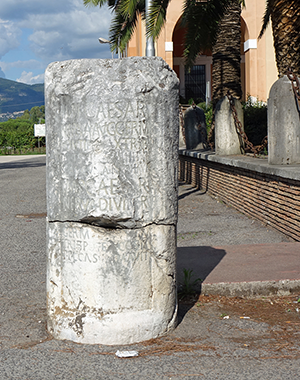
-
Via Appia: Three Taverns
The Three Taverns actually were not three taverns. They were a series of buildings at the junction of the Via Appia with two other important roads. This way station was a stopping point if the traveler tired of the journey or for some other reason did not or could not make the normal first stop outside of Rome at the Forum of Appius. While the ancient sources are not clear precisely where this small way station was situated, recent archeological surface work in 2004–2005 has revealed the outlines of walls of buildings right alongside the modern Via Appia a few miles south of Cisterna di Latina. Within the Acts narrative, once again, Paul is greeted by a second delegation from another house church in Rome here at Three Taverns. Luke is nailing down the impression of Paul's positive reception in Italy beyond any shadow of doubt.

-
Via Appia: Lake Albano
The modern Via Appia (SS7) follows closely the route of the ancient highway. The ancient highway cut through the Alban hills just south of Rome. Most Bible maps trying to indicate the Via Appia do not seem to recognize this fact. On his journey to Rome down the Via Appia, just on the outskirts of the city, Paul would have climbed in altitude up through the Alban hills and past several beautiful volcanic crater lakes, even as does the modern Via Appia. The largest and most scenic of these lakes is Lake Albano.
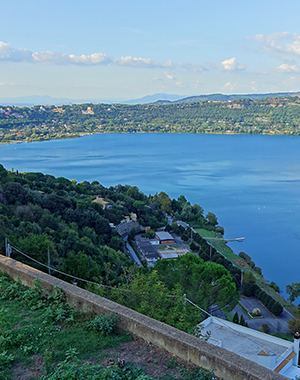
-
Via Appia: Capua
-
JR—Italy: Rome Arrival
-
Arrival: San Sebastion Gate
All roads lead to Rome, and so did Paul’s. The present Via Appia, in Rome called the Appia Antica, terminates at the San Sebastian Gate on the Aurelian Wall defensive expansion in AD 275. The original gate from the days of the Roman Republic that Paul would have entered was the Porta Capena a little closer in, part of the earlier fourth-century BC Servian Wall.
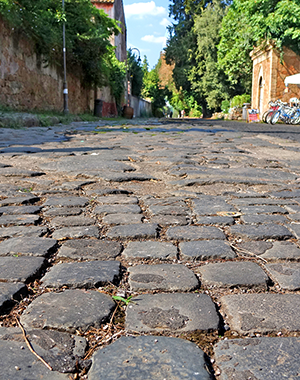
-
Arrival: End of Luke's "We" Section
As Paul arrives in Rome, Luke’s third and last “we section” comes to an end. When one puts together all three “we sections” and their careful and strategic placement in the Acts narrative, then a pattern becomes clear and a crucial point becomes obvious about Luke’s perspective on Rome and God’s will for Paul.
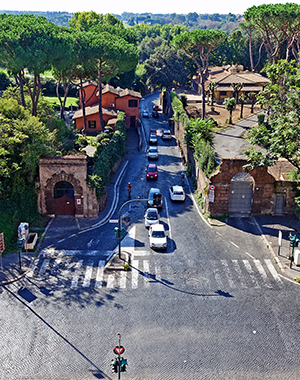
-
Arrival: Paul's Reception
Luke begins to develop the theme of Paul's positive reception in Italy as soon as Paul sets foot on Italian soil. The stages of this development are clear, so what is Luke’s point? The church of San Clemente, the oldest in Christianity and tied to Clement, bishop of Rome at the end of the first century AD, is an appropriate setting to consider this question.
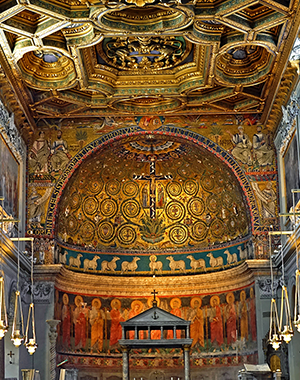
-
Arrival: Aquila and Priscilla
We have a hard time getting back into the real world of first-century Christians. This problem is especially prominent even in one of the most common words in a believer’s vocabulary, “church.” Actually, had Paul not made this expression so characteristic of referring to his congregations, Christianity might never have received this term as stock vocabulary. By “church,” we almost always mean a large complex of commercial buildings. Paul actually meant assemblies of believers themselves. These assemblies likely took place in private homes, so have been called “house churches.” House churches had to have patrons who sponsored the meetings in their homes. Perhaps Aquila and Priscilla fulfilled this role of patron of a house church upon their return to Rome after working with Paul in Corinth. Their leadership even might be considered contributory to the reason for Paul’s positive reception in Rome.
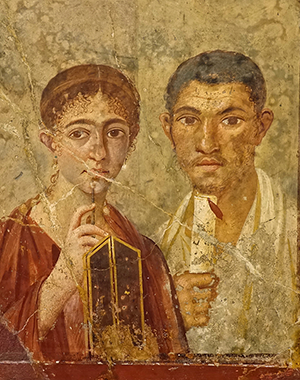
-
Arrival: Caesar's Tribunal
Luke never says a word about Paul’s appeal to Caesar after Paul arrives in Rome. The reason for this silence is that, when read carefully, the Acts narrative shows that Paul’s appeal to Caesar is not the point at all for Luke about Paul in Rome. One might speculate that Paul did appear before Caesar, which would have been Nero (early 60s). Where would Nero conduct his tribunal? The most likely places would be either as a part of the imperial palace complex on the Palatine hill, or else one of the known tribunals in the famous Roman Forum itself in the valley below the Palatine hill.

-
Arrival: Paul's Destiny
Focusing exclusively on Paul’s appeal to Caesar is a narrative dead end. Luke never intended to follow that trail, because he simply does not. He never says a word about the appeal after Paul gets to Rome. In fact, for Luke, Paul’s appeal to Caesar is the nadir of Paul’s faith in Messiah. The ending of Acts, read carefully, shows that Luke is tying together the overarching themes of Acts that he has developed consistently from the beginning of the book. He brings the plot to an appropriate conclusion as he presents Rome as God’s will and Paul’s destiny. Thus, the key to the ending of Acts is Paul’s Hellenist message, the fulfillment of the Hellenist movement in Acts begun with Stephen, not Paul’s faithless imperial appeal. That plot line is why Luke is silent on the appeal.
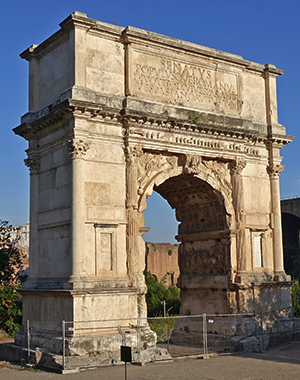
-
Arrival: Paul's Prison Epistles
The Acts narrative concludes with Paul spending two years in Rome. Once the Acts narrative ends, we are at a loss to put together the rest of Paul’s biography. We become entirely dependent on Catholic tradition. One element of this post-Acts speculation about Paul that has broad support is that Paul’s imprisonment at the end of Acts about AD 60–62 is the likely context for the composition of the “prison epistles” of Ephesians, Colossians, Philemon, and Philippians.
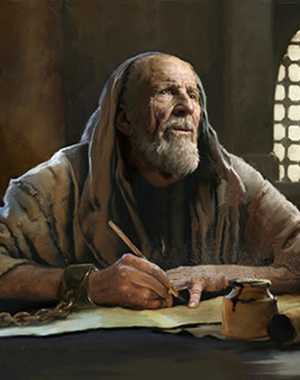
-
Arrival: Paul's Tomb
The Basilica of St. Paul’s Outside the Walls is built over the site venerated as the burial of Paul since at least AD 390.
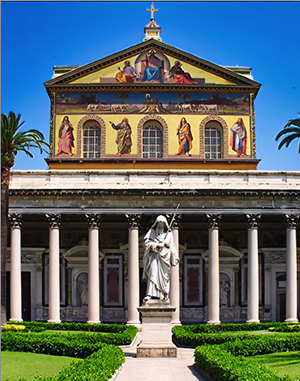
-
Arrival: San Sebastion Gate
-
JR—Italy: Ancient Ostia
-
Ostia: Background to Rome
Ostia was a port at the mouth of the Tiber River just sixteen miles from Rome. By the latter part of the first century AD, not long after Paul’s grain ship landed in Puteoli, Ostia had overtaken Puteoli as the main port of Rome where all the Alexandrian grain ships arrived. Since numerous parts of ancient Ostia date to the first century, then this archeological site provides rich background for contextualizing Roman life in Italy at the time of Paul’s journey to Rome.
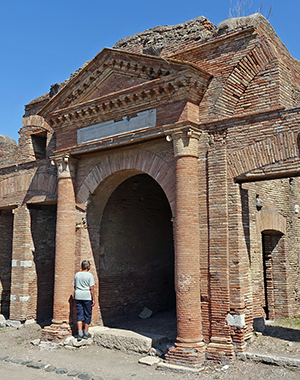
-
Ostia: Jewish Synagogue
Ancient Ostia has a first-century AD synagogue not far from the forum and business district. This synagogue provides context for Paul’s interaction with Jewish synagogue leaders at the end of Acts once he arrives in Rome. These leaders would have represented various synagogues throughout the city of Rome. Each synagogue was governed independently by its own synagogue leadership, and that is why Paul had to meet with a group of synagogue leaders in Rome to discuss his message about Jesus as Messiah soon after he arrived. These leaders would have come from local synagogues like the one at Ostia.

-
Ostia: Background to Rome
-
JR—Italy: Rome's Monuments
-
Monuments: Flavian Colosseum
The Colosseum—the most iconic remnant of the ancient Roman empire—was a Flavian dynasty masterpiece built by Vespasian, finished and dedicated by Titus, and enhanced by Domitian. Besides keeping the populace entertained, the massive structure served the purpose of Roman imperial propaganda.
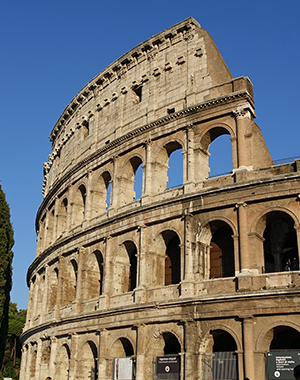
-
Monuments: Colosseum and Jewish War
What many people do not realize is that the famous Colosseum was financed by the spoils of the First Jewish War, AD 66–70. In fact, some of the hard labor in the rock quarries and on the building itself was provided by thousands of Jewish slaves taken after the war and deported from Judea to work on this amphitheater.
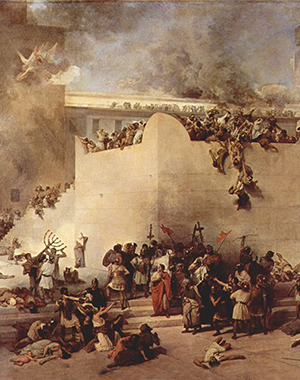
-
Monuments: Colosseum and Ludas Magnus
The Ludus Magnus was the gladiator training grounds. The training grounds connected to the Colosseum in Rome have been discovered not far from the amphitheater.

-
Monuments: Arch of Titus
Spoils from the destroyed Jewish temple in Jerusalem taken by the Romans are carved in relief on the inner side of the Arch of Titus. This arch memorializes this watershed moment in Jewish history, which came in AD 70 only eight years after Paul had appealed to leaders of Rome's synagogues about Jesus as God’s Messiah.
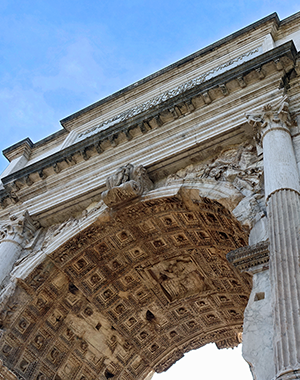
-
Monuments: Ara Pacis Auguste
The Ara Pacis Augustae is the Augustan Altar to Peace commissioned by the Roman senate in 13 BC upon the return of Augustus to Rome after conquering Spain and Gaul. This marble monument with its dramatic and bold reliefs is the greatest surviving icon of Roman imperial ideology as invented and promoted by Augustus after consolidating his Roman empire from the crumbling ruins of the Roman Republic. All the great themes of the imperial worldview are preserved in these reliefs.
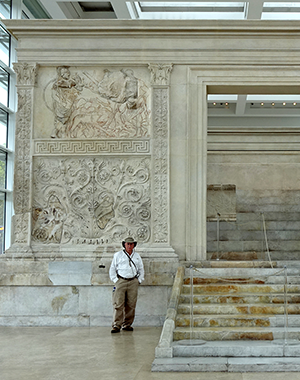
-
Monuments: Ara Pacis Description
The reliefs of the Ara Pacis depict the imperial family in procession to perform sacrificial duties at the Peace Altar. The imperial line of succession is implicated, to assure the Roman Senate of peace and stability of government after two centuries of civil war. Themes of personal religious piety and traditional Roman values and virtues are prominent. The inevitability of empire, divine rule, and Roman conquest also are highlighted. This imperial world benefits not only all of human society but all of nature as well with the promise of peace and abundance fulfilled. In other words, the reliefs of the Ara Pacis Augustae are the premier example of imperial ideology of the Augustan Age, propagandized as the climax to human history culminating in a glorious rule and a golden age. This ideology functions as another gospel competing for the hearts and minds of Romans to which Paul’s gospel of Jesus the Messiah of God’s kingdom stands in bold contrast.
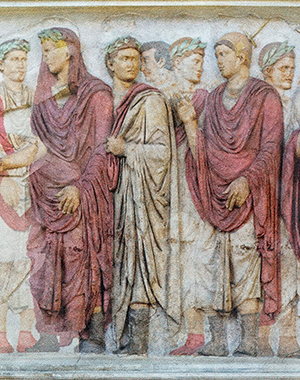
-
Monuments: Hilastērion in Rom 3:25
Excavations in the early 1990s at Metropolis, an ancient city only 21 miles north of Ephesus, found three early Roman period inscriptions on two altars dedicated to Augustus and one to Germanicus. A fascinating possible connection of the term hilastērion crucial to the meaning of Rom 3:25 and these Roman inscriptions might suggest new ways to understand Paul’s meaning. Since Luke says that Paul impacted the whole province of Asia and the word of the Lord spread widely from Ephesus (Acts 19:10, 20), one can speculate the city of Metropolis was affected by Paul’s preaching and that Paul would know about this city and its inscriptions. Romans is written soon after Paul was in Ephesus.
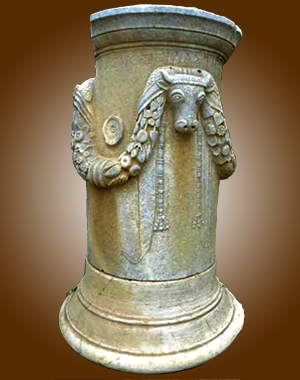
-
Monuments: Flavian Colosseum
Videos > Videos-1MJ Videos-2MJ Videos-3MJ Videos-4JR Videos-Rev